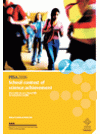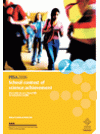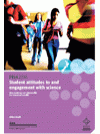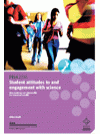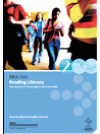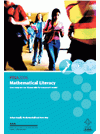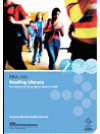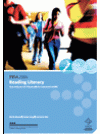What is PISA?
- The Programme for International Student Assessment (PISA) is an international standardised study that assesses and compares how well countries are preparing their 15-year-old students to meet real-life opportunities and challenges.
What does PISA assess?
- PISA assesses three key areas of knowledge and skills - reading literacy, mathematical literacy and scientific literacy - and has a focus on one of these literacy areas each time PISA is administered.
- The focus of PISA 2006 is science. The term ‘literacy’ is used to emphasise that the assessment is not restricted to assessing how well students have mastered the content of a specific school curriculum. PISA focuses on assessing students’ ability to apply their knowledge and skills, and their ability to make decisions in real-life situations. PISA defines this approach as assessing “[t]he knowledge, skills, competencies and other attributes embodied in individuals that are relevant to personal, social and economic well-being”.
What additional information is gathered?
- Background information is also gained from questionnaires completed by students and school principals. In PISA 2006 parents also completed a questionnaire. This allows for the relationship between contextual information and achievement to be examined.
How often is PISA administered?
- PISA is administered every three years, beginning in 2000, when reading was the main focus. In 2003 the focus was mathematical literacy, and in 2009 it will be reading literacy again. Rotating the major focus for each administration of PISA provides in-depth and detailed information on the subject of major focus and an ongoing source of achievement data on the two minor subjects.
Who participates in PISA?
- PISA assesses 15-year-olds. Around 400,000 15-year-old students from 57 countries, including the 30 Organisation for Economic Co-operation and Development (OECD) member countries, participated in PISA 2006. In New Zealand 4,824 students from 170 schools took part. Students and schools were randomly selected. A two-tiered stratified sampling method was used to ensure the sample was representative. Students were sampled from schools of different sizes and decile groupings, and from urban and rural schools. As a result, every 15-year-old had roughly the same chance of selection.
Why participate in PISA?
- PISA assesses students who have completed around 10 years of compulsory schooling, which means the PISA results are an important source of information in New Zealand. PISA measures progress towards the government education sector’s goals of:
- building an education system that equips New Zealanders with 21st century skills, and
- reducing systemic underachievement in education.
- PISA not only allows measurement of New Zealand’s progress on these goals over time, but also allows measurement of New Zealand’s performance relative to other countries in equipping students with skills and reducing disparities in achievement.
- The PISA data provides evidence to inform policy and practice in literacy, numeracy and curriculum development.
Who organises PISA?
- PISA is an initiative of the OECD and a collaborative effort of the participating countries. A consortium was responsible for developing and overseeing PISA 2006 at the international level. This consortium is led by the Australian Council for Educational Research (ACER), and consists of the Netherlands National Institute for Educational Measurement (Citogroup); Westat (USA); the Educational Testing Service (ETS, USA); and the Japanese National Institute for Educational Policy Research (NIER, Japan). The Comparative Education Research Unit within the Ministry of Education’s Research Division is responsible for PISA in New Zealand.
Key Results
New Zealand’s 15-year-olds are more ready for tomorrow’s world than the majority of their international counterparts.
Scientific literacy (main focus)
- Of the 57 countries participating in PISA 2006, only two countries performed better than New Zealand, eight countries were similar, and the other 46 countries were significantly lower.
- New Zealand and Finland achieved the largest proportion of students performing at the highest level of scientific literacy.
- The proportion of students with a low level of scientific proficiency was larger than four high-performing countries, but similar to six other high-performing countries.
- Girls and boys showed similar mean scientific literacy performance, and girls were as likely to achieve the highest level of scientific literacy as boys.
- There were Asian, Māori, Päkehä-European and Pasifika students who performed at the highest level of scientific literacy. However, Päkehä-European and Asian students were more likely to be at the higher end while Māori and Pasifika were over-represented at the lower end.
- Overall New Zealand had high performance in each scientific competency, with particular strengths in identifying scientific issues and using scientific evidence compared to explaining phenomena scientifically.
- Overall New Zealand had high performance in each science content area, with particular strengths in earth and space systems and living systems compared to physical systems.
Reading literacy (minor focus)
- Of the 57 countries participating in PISA 2006, the mean reading literacy performance of only three countries was significantly higher than New Zealand, two countries were similar, and the other 50 countries were significantly lower.
- New Zealand’s 15-year-olds’ performance in reading literacy showed no significant change between 2000 and 2006.
Mathematical literacy (minor focus)
- Of the 57 countries participating in PISA 2006, the mean mathematical literacy performance of only five countries was significantly higher than New Zealand, seven countries were similar, and the other 44 countries were significantly lower.
- New Zealand’s 15-year-olds’ performance in mathematical literacy showed no significant change between 2003 and 2006.

